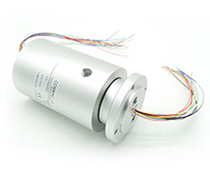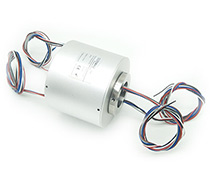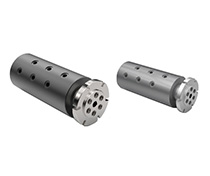Slip Rings
Slip Ring Union
Rotary Unions
Technical Support
Fiber Brush About Wind Turbine Slip Ring
Wind power slip ring is a rotating joint component part which located at wind power plant blades and trunk rotation shaft. This component is the only channel to transfer power and signal between the fan and the blades, a lot of sensor data must through slip ring to transmit. Wind turbine slip ring belonging to a subclass of slip ring, then what is the slip ring.
In general, the slip ring assembly consists of about several parts: the slip ring body, brush holder assembly, combination frame, radial ball bearings, bearing cap and so on. In the slip ring surface is often coated with multiple layers of precious metals in order to reduce the resistance, the brushes use precious metal alloy wire molding process, mainly by wire brush elastic pressure contact with conductive ring to transmit the signal and current.
Slip ring assembly using reliable, stable performance, high precision, current, compact, low noise, multiple ring road, long life and easy to install.
The current international use of slip ring technology is divided into the following three:
1, composite brush block technology, commonly used carbon brushes, brush copper, in the form of silver / graphite / molybdenum disulfide and other brush block.
2, the use of precious metal alloy monofilaments, such as AuNi9 like.
3, fiber brush technology, refers to a special fiber brush sliding electrical contact design.
Fiber brush simply means that the individual metal filament (line) calibrated and fixed in a metal tube. In this cantilever design, the end of the brush attachment bundle unbound in the groove in the surface of the ring road.
For now, fiber brush is more suitable for wind turbine slip ring. For example, fiber brush contact sensitivity to wind turbine cabin environment is far lower than other slip ring contacts technologies. These fiber brush slip ring protection protective shell comply with various standards including IP65 (waterproof and dustproof protection equipment belonging to standard). And because fiber brush contacts do not require lubrication, their ability to withstand low and high temperatures are strong. Fiber brush design has proved able to adapt to temperatures as low as -55 ° C and up to + 80 ° C. And fiber brush can also run at 0% to 100% relative humidity (RH). In contrast, the composite brush requires humidity between 15% to 85% in order to operate reliably.
Many wind industry stakeholders know that there are many parts reliability problems, and now running in the cause of component failure is also a deeper understanding, but for the slip ring technology (fiber brush slip rings included), despite the advanced design and performance, was still ignored by many wind farm owners.
Initially, the large wind turbine manufacturers use a composite brushes, but this technique can produce a large amount of metal, graphite debris. To solve the metal powder and debris generated by composite contacts, manufacturers turned to gold contacts, and fiber brush slip rings made based on these design improvements. But in many cases, wind farm owners still follow the old-fashioned slide ring replacement, or even a year for a change. They still buy the same equipment from the factory, and this practice has lasted an unnecessary maintenance and replacement cycle.
In fact, if the wind turbine slip ring as a requirement to maintain a regular program, replace maintenance-free fiber brush technology just 30 minutes to complete. For possession, design, operation and maintenance of wind turbines people, fiber brush technology is undoubtedly the best choice.



